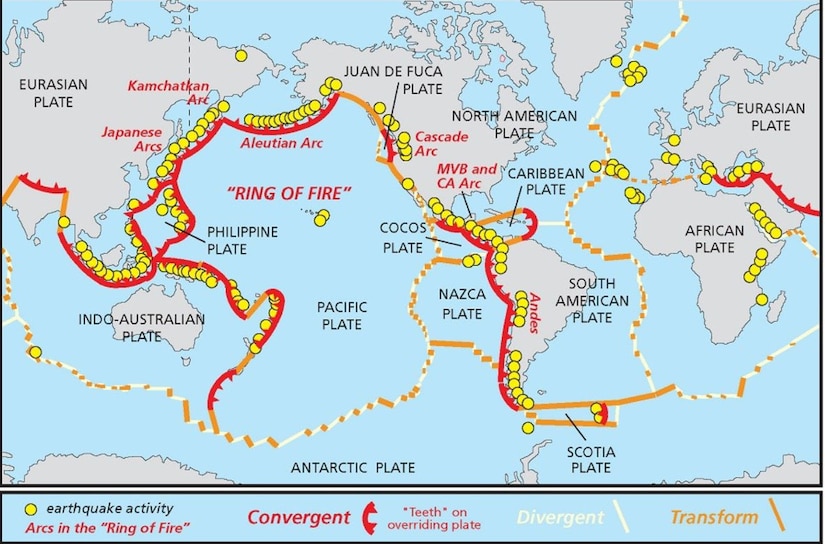In 1968, W. Jason Morgan published his groundbreaking thesis on the mathematical principles underlying the theory of plate tectonics. His work demonstrated quantitatively that seafloor spreading and continental movements could explain the origin of earthquakes, volcanoes and mountains.
In 1912 Alfred Wegener presented his theory of “continental drift” to the scientific world. He noted how the continents all seemed that they could fit together like a jigsaw puzzle. He also noted that where the sides of continents appeared to match, they also shared rock and fossil types. Wegener proposed the continents must have drifted apart over time, but many scientists rejected the hypothesis because he couldn’t explain the underlying mechanisms of the movement.
Morgan’s theory that the earth’s surface is made up of rigid tectonic plates floating on the Earth’s mantle and moving relative to each other — spreading apart, colliding, etc. — hinged on using spherical geometry to predict plate motion.
Later scientists refined his ideas, but Morgan’s quantitative theory of plates converging, diverging and transforming in relation to one another is considered foundational to the research of geophysical science. Years later, he was proven right by precise GPS measurements of plate movements.
Morgan’s second great achievement came in 1971. He expanded on earlier work by John Tuzo Wilson, who realized the Hawaiian Islands got older the farther they were located from the volcanically active main island, so the whole island chain must therefore be moving away from a “hot spot” under Hawaii.
This hypothesis was not generally accepted when it was introduced, but Morgan’s work explained how plumes of magma from the mantle cause the formation of volcanoes — meaning they did not have to be located on plate boundaries. His theory solved the geophysical and geochemical mysteries of why volcanically active islands such as Hawaii and Iceland are composed of different rocks than those found in mid-ocean ridges and how the Yellowstone National Park hot spot formed in Wyoming.
Morgan also served as an officer in the Navy from 1957 to 1959 after graduating from Georgia Institute of Technology on a Navy ROTC scholarship.
During his naval service, he taught nuclear physics and navigation to submariners at the Nuclear Power School in New London, Connecticut. He said the work prepared him to take an interest in physics and geoscience.
NPS is currently located in Goose Creek, South Carolina. According to the Navy, its nuclear program is widely acknowledged as having the most demanding academic program in the U.S. military. Topics include nuclear physics, nuclear reactor technology, metallurgy, thermodynamics and chemistry.
Morgan was born in Savannah, Georgia, on Oct. 10, 1935, to William Jason Morgan, who also went by Jason, and Maxie Ponita “Nita” Morgan. Morgan’s father served in the Army during World War I in France, working as a blacksmith.
On July 31, 2023, Morgan died at age 87 in Natick, Massachusetts. He is survived by his son Jason Morgan, a geophysicist, and his daughter Michèle Morgan, as well as a number of grandchildren.




